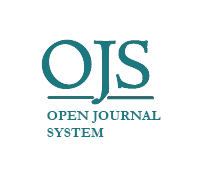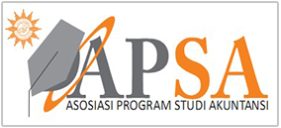The Effect Of Innovation Strategy In The Influence Of Managerial Ability On Firm Performance
DOI:
https://doi.org/10.22219/jrak.v11i3.14956Keywords:
firm performance, innovation strategy, managerial abilityAbstract
Managerial ability collaborates managerial skill and effort to improve firm performance through resources utilization and strategy implementation. This study is aimed to examine the influence of managerial ability on firm performance with the mediation effect of innovation strategy. The final sample is 940 firms from the manufacturing sector listed on the Indonesian Stock Exchange 2012-2019. Analysis techniques use Data Envelopment Analysis (DEA) to measure managerial ability score, cluster analysis to analyze company strategy, and path analysis to test and analyze variables statistically. The result shows that innovation strategy does not mediate the influence of managerial ability on firm performance. Higher managerial ability directly increases the firm performance, but it decreases innovation strategy and innovation strategy does not affect firm performance. In conclusion, managers should choose between efficiency and innovation because it is a trade-off. Therefore, the company must sacrifice one of them.
Downloads
References
Arianwuri, F. G., Sutrisno, T., & Prihatiningtyas, Y. W. (2017). Pengaruh Strategi Bisnis Perusahaan Dan Kompetisi Pasar Ekuitas Terhadap Risiko Crash Harga Saham Dengan Overvalued Equities Sebagai Variabel Mediasi. Jurnal Reviu Akuntansi dan Keuangan, 7(1), 963-976. doi:https://doi.org/10.22219/jrak.v7i1.10
Baghdadi, G. A., Bhatti, I. M., Nguyen, L. H., & Podolski, E. J. (2018). Skill or effort? Institutional ownership and managerial efficiency. Journal of Banking & Finance, 91, 19-33. doi:https://doi.org/10.1016/j.jbankfin.2018.04.002
Bamber, L. S., Jiang, J., & Wang, I. Y. (2010). What’s my style? The influence of top managers on voluntary corporate financial disclosure. The accounting review, 85(4), 1131-1162. doi:https://doi.org/10.2308/accr.2010.85.4.1131
Chang, Y. Y., Dasgupta, S., & Hilary, G. (2010). CEO ability, pay, and firm performance. Management Science, 56(10), 1633-1652. doi:https://doi.org/10.1287/mnsc.1100.1205
Demerjian, P., Lev, B., & McVay, S. (2012). Quantifying managerial ability: A new measure and validity tests. Management Science, 58(7), 1229-1248. doi:https://doi.org/10.1287/mnsc.1110.1487
Demerjian, P. R., Lev, B., Lewis, M. F., & McVay, S. E. (2013). Managerial ability and earnings quality. The accounting review, 88(2), 463-498. doi:https://doi.org/10.2308/accr-50318
Edi, E., & Yopie, S. (2019). Management Capability To Produce Quality Earning. Jurnal Reviu Akuntansi dan Keuangan, 9(1), 75-84. doi:https://doi.org/10.22219/jrak.v9i1.7001
Ernawati, E. (2016). Pengaruh Strategi Bisnis dan Ketidakpastian Lingkungan terhadap Hubungan antara Informasi Broad Scope Sistem Akuntansi Manajemen dan Kinerja Manajerial. Journal of Accounting and Investment, 6(1), 21-39.
Fainshmidt, S., Nair, A., & Mallon, M. R. (2017). MNE performance during a crisis: An evolutionary perspective on the role of dynamic managerial capabilities and industry context. International Business Review, 26(6), 1088-1099. doi:https://doi.org/10.1016/j.ibusrev.2017.04.002
Giménez, J., Madrid-Guijarro, A., & Duréndez, A. (2019). Competitive Capabilities for The Innovation and Performance of Spanish Construction Companies. Sustainability, 11(19), 5475. doi:https://doi.org/10.3390/su11195475
Hambrick, D. C., & Mason, P. A. (1984). Upper echelons: The organization as a reflection of its top managers. Academy of management review, 9(2), 193-206. doi:https://doi.org/10.5465/amr.1984.4277628
Ittner, C. D., Larcker, D. F., & Rajan, M. V. (1997). The choice of performance measures in annual bonus contracts. Accounting Review, 231-255. doi:https://www.jstor.org/stable/248554
Jimmy, S. Y., Balqiah, T. E., & Widjaya, A. (2019). The building of country managers' competence and its use in orchestrating subsidiaries' resource: Empirical studies of indonesian subsidiaries in Nigeria. Gadjah Mada International Journal of Business, 21(1), 37. doi:https://search.informit.org/doi/10.3316/informit.623315859345893
Kieso, E., D., W., J., J, , & Warfield., D., T. (2015). Intermediate accounting. New Jersey: John Wiley & Sons, Inc.
Krismiaji, K. (2017). Strategi bisnis, leverage keuangan dan kinerja perusahaan. Jurnal Akuntansi dan Auditing Indonesia, 21(1), 37-48. doi:https://doi.org/10.20885/jaai.vol21.iss1.art4
Kundu, S., & Gahlawat, N. (2016). Ability–motivation–opportunity enhancing human resource practices and firm performance: Evidence from India. Journal of Management & Organization, 1-18. doi:https://doi.org/10.1017/jmo.2016.22
Masri, I. (2016). The Role of Business Strategies on Relation Intellectual Capital Element and Corporate Performance. Jurnal ASET (Akuntansi Riset), 8(1), 1-12. doi:https://doi.org/10.17509/jaset.v8i1.12197
Miles, R. E., Snow, C. C., Meyer, A. D., & Coleman Jr, H. J. (1978). Organizational strategy, structure, and process. Academy of management review, 3(3), 546-562. doi:https://doi.org/10.5465/amr.1978.4305755
Mohsenzadeh, M., & Ahmadian, S. (2016). The mediating role of competitive strategies in the effect of firm competencies and export performance. Procedia Economics and Finance, 36, 456-466. doi:https://doi.org/10.1016/S2212-5671(16)30069-7
Mori, N., & Munisi, G. (2014). Evaluating the missing links in the relationship between executives’ compensation and firm performance. International Journal of Business and Globalisation, 12(3), 315-333. doi:https://doi.org/10.1504/IJBG.2014.060215
Rundquist, J. (2012). The ability to integrate different types of knowledge and its effect on innovation performance. International Journal of Innovation Management, 16, 1250014. doi:https://doi.org/10.1142/S1363919612003794
Santoro, G., Thrassou, A., Bresciani, S., & Del Giudice, M. (2019). Do knowledge management and dynamic capabilities affect ambidextrous entrepreneurial intensity and firms’ performance? IEEE Transactions on Engineering Management. doi:10.1109/TEM.2019.2907874
Scott, W. R. (2012). Financial Accounting Theory 6th edition.
Thongsri, N., & Chang, A. K.-H. (2019). Interactions Among Factors Influencing Product Innovation and Innovation Behaviour: Market Orientation, Managerial Ties, and Government Support. Sustainability, 11(10), 2793. doi:https://doi.org/10.3390/su11102793
Ueki, Y., & Martínez, J. M. G. (2019). The impact of engineers’ skills and problem-solving abilities on process innovation. Economic research-Ekonomska istraživanja, 1-20. doi:https://doi.org/10.1080/1331677X.2019.1596826
Xu, Y., Ribeiro-Soriano, D. E., & Gonzalez-Garcia, J. (2015). Crowdsourcing, innovation and firm performance. Management Decision. doi:https://doi.org/10.1108/MD-06-2014-0408
Yusdita, E. E. (2017). Periklanan Dalam Implementasi Strategi dan Implikasinya Pada Kinerja Keuangan Perusahaan Consumer Goods di Indonesia. Assets: Jurnal Akuntansi dan Pendidikan, 5(1), 73-88. doi:http://doi.org/10.25273/jap.v5i1.1190
Zwageri, A. (2020). Pengaruh Karakteristik Tim Manajemen Puncak terhadap Manajemen Laba dengan Kualitas Audit sebagai Variabel Pemoderasi. Jurnal Akademi Akuntansi, 3(2), 133-152. doi:https://doi.org/10.22219/jaa.v3i2.11987
Downloads
Published
Issue
Section
License
Copyright (c) 2021 Jurnal Reviu Akuntansi dan Keuangan

This work is licensed under a Creative Commons Attribution 4.0 International License.

Jurnal Reviu Akuntansi dan Keuangan is licensed under a Creative Commons Attribution-NonCommercial-ShareAlike 4.0 International License.
Authors who publish with this journal agree to the following terms:
- Authors retain copyright and grant the journal right of first publication with the work simultaneously licensed under a Creative Commons Attribution-NonCommercial-ShareAlike 4.0 International License that allows others to share the work with an acknowledgement of the work's authorship and initial publication in this journal.
- Authors are able to enter into separate, additional contractual arrangements for the non-exclusive distribution of the journal's published version of the work (e.g., post it to an institutional repository or publish it in a book), with an acknowledgement of its initial publication in this journal.
- Authors are permitted and encouraged to post their work online (e.g., in institutional repositories or on their website) prior to and during the submission process, as it can lead to productive exchanges, as well as earlier and greater citation of published work (See The Effect of Open Access).










